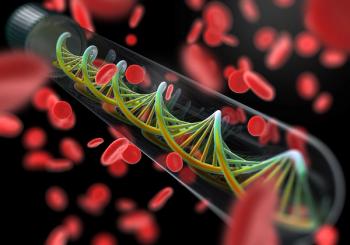
Oncology NEWS International
- Oncology NEWS International Vol 9 No 7
- Volume 9
- Issue 7
Second-Line Paclitaxel Benefits Advanced NSCLC Patients Who Fail First-Line Paclitaxel/Carboplatin Therapy
HOUSTON-Improved survival with a very favorable toxicity profile resulted from using weekly single-agent paclitaxel (Taxol) 80 mg/m² in patients with advanced non–small-cell lung cancer (NSCLC) who failed first-line therapy with paclitaxel/carboplatin (Paraplatin).
HOUSTONImproved survival with a very favorable toxicity profile resulted from using weekly single-agent paclitaxel (Taxol) 80 mg/m² in patients with advanced nonsmall-cell lung cancer (NSCLC) who failed first-line therapy with paclitaxel/carboplatin (Paraplatin).
This was among the findings of a multi-institutional study evaluating ways to extend the efficacy of paclitaxel while minimizing toxicity. Merrill Kies, MD, of M.D. Anderson Cancer Center, presented the study at the ASCO meeting.
Coinvestigator Mark Socinski, MD, of the University of North Carolina, Chapel Hill, commented, This regimen has notable median and 1-year survival rates with substantially less toxicity than other single agents in this setting.
All patients were included in a phase III trial to determine the optimal duration of first-line paclitaxel/carboplatin. They were then divided into three groups. Group 1 included refractory patients who progressed after two cycles of first-line chemotherapy. Group 2 received four cycles of first-line chemotherapy and were followed until disease progression. Group 3 received continuous paclitaxel/carboplatin until progression.
Improved Survival
The overall response rate to first-line chemotherapy was 26.6%. Patients then received second-line weekly paclitaxel after disease progression, for a median of 8 weekly treatments. Median survival from the start of second-line therapy was 5.9 months for all 44 assessable patients, with no differences seen among the groups.
Second-line weekly paclitaxel produced an overall response rate of 6.8%. Stable disease was demonstrated in 38.6% of patients at 8 weeks, Dr. Kies reported.
Virtually all responses occurred in patients who had received four cycles of first-line chemotherapy and were taken off treatment for 4 months before starting weekly paclitaxel. Responses to second-line paclitaxel were not noted in patients who progressed after two cycles of continuous first-line treatment.
While this was not a randomized prospective trial, Dr. Kies highlighted the good response in patients who had interrupted treatment, which he said is consistent with the emerging concept that responses are more likely after a treatment-free interval.
A median survival of almost 11 months was noted for the entire group. One-year survival was 39%, and 2-year survival was 23%. Median survival duration by subgroup was 6.3 months for group 1, 12.5 months for group 2, and 11.7 months for group 3. Median 1-year survival by group was 12% for group 1, 54% for group 2, and 45% for group 3, Dr. Kies reported.
Grade 2-3 neuropathy occurred in seven patients. Three patients developed grade 3 neuropathy on weekly therapy. There were no grade 4 toxicities and no differences in quality of life among the 26 patients assessed for this.
The overall survival looks promising in the early returns, Dr. Kies commented. If the encouraging survival holds up, he said the study would generate a lot of interest.
Articles in this issue
over 25 years ago
Couric Urges Doctors to Talk to Patients About Colon Cancerover 25 years ago
Automated Imaging Notification System Close to Fail-Safeover 25 years ago
Higher Dairy Consumption Linked to Prostate Cancer Riskover 25 years ago
First-Year Funding of Early Detection Research Network Completeover 25 years ago
Gritty Antitobacco Ads and More From Legacy Foundationover 25 years ago
Tositumomab Effective for Low-Grade Follicular Lymphomaover 25 years ago
New Awards Spotlight Courage of Cancer Survivorsover 25 years ago
Hospital Volume Shown to Predict Breast Cancer Outcomeover 25 years ago
New Drug Information Websiteover 25 years ago
NCCN Presents Updated Colorectal Cancer GuidelinesNewsletter
Stay up to date on recent advances in the multidisciplinary approach to cancer.















































































